Australia So Much to See


Augusta Margaret River area - Hamelin Bay and Margaret River
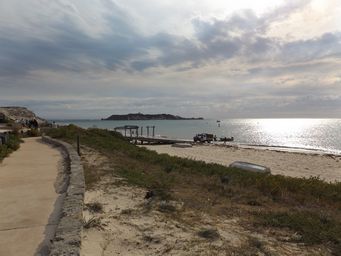
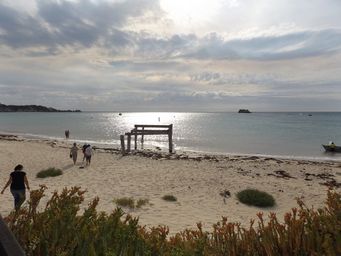
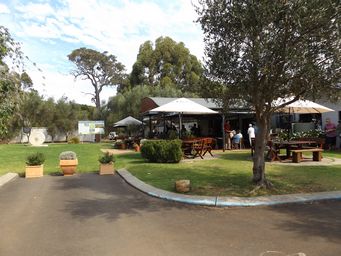
References used :
Hamelin Bay from Margaret RiverVista
Hamelin Bay Stingrays Protected from Fisheries Department WA
Signage at Hamelin Bay
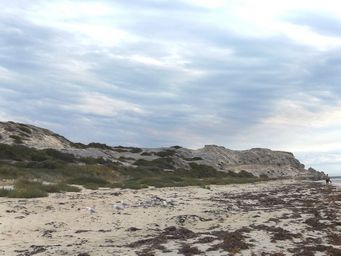
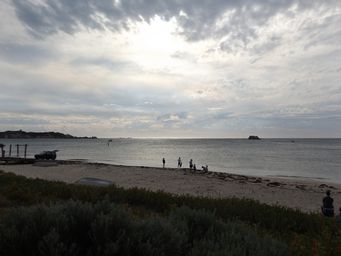
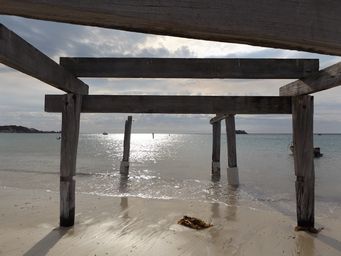
Hamelin Bay was named after French explorer Jacques Félix Emmanuel Hamelin who sailed through the area in about 1801. Hamlin
Bay is on the north side of White Cliff Point, and Hamelin Island and the smaller Peak Island provide some shelter, so the bay was
used as a safe haven by sailing ships.
The jetty at Hamelin Bay was established to service the timber milling operations of M.C. Davies, at the same time as utilising a
jetty at Flinders Bay just south of Augusta. One of the Davies timber railways extended onto the Hamelin Bay Jetty, which was built
in 1882 and extended in 1898.
The extended jetty was almost 600 metres long and was capable of berthing three ships at a time.
M.C. Davies Karri & Jarrah Company operated in the nearby Boranup forest and the Karridale Mill provided timber for the waiting
ships, via a railway line. The railway ran the complete length of the jetty, where steam cranes would unload the timbers directly
from the carriages onto the waiting ships. The timbers were then sent around the world to be used in road and building construction.
It appears the jetty was still serviceable following severe storms in 1900 during which several ships were wrecked in the bay.
By 1913, larger ships were able to come to the Busselton jetty and use of the Hamelin Bay jetty was diminishing as fewer ships
serviced Hamelin Bay. Photos dating back to 1920 show degradation of the decking.
In 1921 fire destroyed much of
the jetty, and in 1961 a severe storm destroyed most of the remaining structure. All that remains at the shore line are eight piles
and six cross-beams.
Since 2013 polycarbonate jackets were fitted to some of the remaining jetty pylons to help preserve them. (See them on photo top left
of page). Some cross beams have been replaced to retain this historic remnant, which has become one of the most photographed
beach scenes in Australia.
During the 1940's salmon fishing was established in the bay.
Smooth stingrays, black stingrays and eagle rays inhabit the shallow waters of Hamelin Bay. Rays gracefully wing their way over
the ocean as they forage for buried molluscs, invertebrates, worms and crustaceans. They sense electrical currents produced
by their prey's muscles and nerves. Ray's eyes are on the tops of their heads to watch out for their own predators.
Large stingrays appear to frolic in the shallows around the pylons of the old jetty, unconcerned by the people wading there, and even coming in to greet them. These are known as the friendly stingrays of Hamelin Bay. Two European tourists are delighted as the stingrays approach them in the breaking waves.
Wild stingrays and skates frequenting the popular Hamelin Bay tourist spot will be totally protected under new regulations that came
into effect 25th February 2012. The regulations identify a protection zone in the area where stingrays and skates (members of the
Superorder Batoidea family) cannot be fished or harmed.
“Given the need to protect the tourist attraction stingrays provide in
Hamelin Bay, I agreed to change fishing regulations to ensure rays and skates cannot be taken within a defined area.” Fisheries Minister
Norman Moore said following community and stakeholder consultation
The specified protection area incorporates locations where
locals and tourists often interact with the rays. Rays or skates accidentally caught by recreational fishers within the protection
area would need to be released immediately without being harmed.
There is little else than a caravan park, which includes some cabins, at Hamelin Bay. Formed car parking areas and pathways have been added and a boat ramp installed. This is very different from when we used to launch our boat from the beach, using a Holden sedan.
While a popular beachside family holiday venue on summer, during winter the beach can become piled with seaweed. We once had to carry to boat across the seaweed to the water.
Coming in to the boat ramp at the end of the day (above), with the tiny Peak Island on horizon.
Midway between Cape Naturaliste and Cape Leeuwin, Margaret River has become a busy tourism town. There are wineries, micro-breweries,
restaurants and accommodation options through the region. We did not go into the town of Margaret River on this trip.
The coastline between the Capes has many well-known surfing beaches, listed on Wikipedia with more details about
the most well known surfing beaches on Margaret River Surfing . The Cape to Cape Walk Trail follows the coastline for much of
the way, and a network of mountain bike trails is being developed.
We stopped for lunch at Olio Bello Cafe. Originally a dairy farm in Cowaramup, the 130 hectare property now has 10,000 olive trees, and a variety of olive oils are produced by Olio Bello. Vegetables and herbs grown on the farm for the café are used when available. Open for lunches seven days a week, the restaurant is licenced or you can BYO. There are outdoor tables under shade, in a lush garden.
From Caves Road, turn east into Cowaramup Bay Road for 1.5 kilometres, then south into Armstrong Road for approximately 30 metres to Olio Bello Cafe.